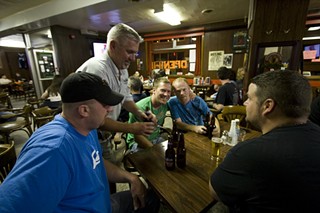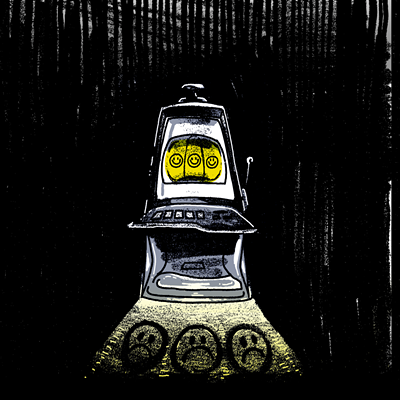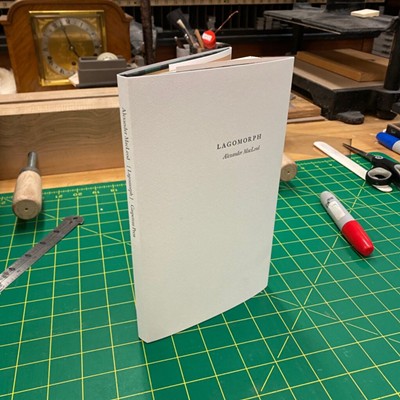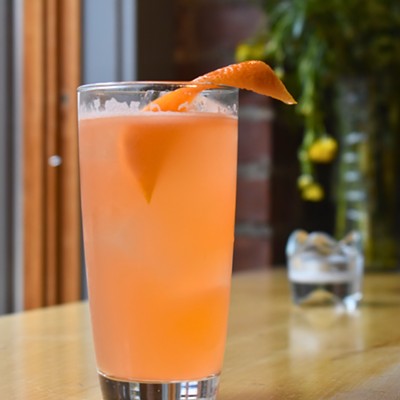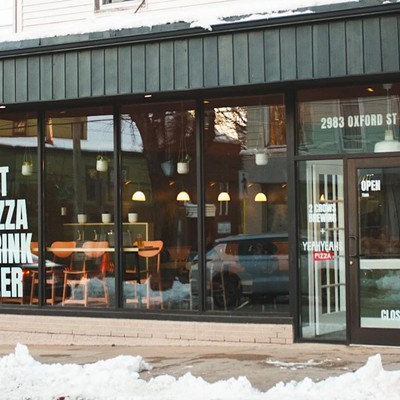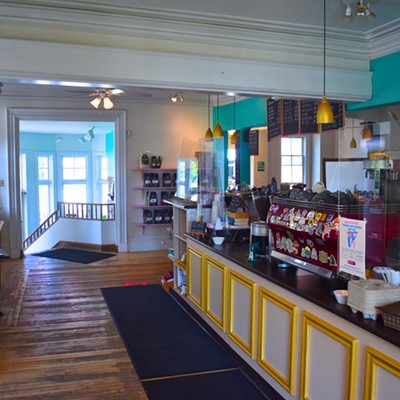The original Midtown tavern is another icon of an important period in our drinking history that is about to disappear. In exactly one month, the old brown and green room will close and the circa-1865 building will be torn down to make way for a new convention centre.
As the last of the postwar working man's taverns in Halifax to operate in the spirit and style of when it first opened in 1949, the Midtown is a landmark you should enjoy one last time.
Ask Fred Martin, one of the few remaining regulars who has drank there since year one. In the '40s, he was a delivery driver for Simpson's around the corner.
"Every Friday without fail, we would race one against the other to get here by four o'clock," Martin tells me over a glass of beer, "and we all gathered at the table in the far corner over there [underneath the painting] to have a chinwag."
What is important about the Midtown's legacy is that it gave drinking a social respectability in a province where alcohol was controlled and demonized by a moral majority of churches, temperance leagues and patrician governments.
In fact, most of the 20th century was lousy for boozers in Nova Scotia. It took 60 years from the Midtown's inception to reach the level of licentiousness we enjoy today.
First, prohibition ran between 1918 and 1930. Then government stores sold liquor for private use only between 1930 and 1948. That meant you could buy a bottle to take home or store at a private club like the Legion, but you couldn't buy a glass of beer in a public house.
Haligonians voted to turn the taps back on for public houses in a 1948 plebliscite, swept up in a tide of postwar good times led by veterans and working men who wanted to enjoy their new prosperity.
"For a while, it was crazy," Martin says, describing the early days of taverns in Halifax. In 1948, the year the Seahorse opened, men were so thirsty to drink in public, "you had to line up on the street to get in," Martin says. "If you and I went in and bought a beer each, when we'd finish drinking it, we'd have to leave and get out and let two more people in."
Staff and Regulars at the Midtown tavern, taken during game seven of the NHL playoffs, Friday, June 12, 2009. Photos by Scott Blackburn.
Let's be clear that we're only talking about men. Women weren't allowed in bars until beverage rooms and lounges were legalized in 1961, and were only allowed into taverns in the '70s.
Early tavern rules were strict, designed to turn drinking beer into an unlikely session of responsible moderation. Most importantly, Greg Marquis, a UNB historian who studies maritime drinking culture, taverns did not have stand-up bars in them, because bars represented to teetotallers the 19th century's wild saloons.
Still, abstainers must have thought going legit was better than what Martin said were the local alternatives: a Chinese restaurant on Grafton that snuck rum into teapots or a bawdy house on Market. Plus, they got to turn bars into what Marquis wryly compares to legal injection sites.
"You were not allowed to have any more than two glasses in front of you on your table at any time," Martin remembers incredulously. "You were not allowed to move from one table to another if a friend came in, unless you called a waiter and he'd move your two glasses."
Despite the micromanaging, the Midtown emerged as our model of a safe and friendly community bar. "In the first years, Doug Grant [who bought the bar in 1970] came here as a worker and he also acted as a bouncer," Martin says. "If anybody got out of line, they got out the door very quickly. There was no fooling around. Not allowed to be bad, or vulgar or dirty. Out the door."
"It was always a good bar," agrees Ronnie Schultz, who worked there as a cook from 1969 until 2002. If you drank too much, Grant would take your keys and call a cab. He might even drive you home.
"They were signs of liberalized attitudes and a permissive society," Marquis says of the old taverns. They marked, "a step away from class distinctions, because in those days, most drinking took place in blue collar places."
Every type of person drank here over the years, Martin says. Workers from the telephone company, the Coca-Cola plant, the Herald, the CBC. And students---lots of students, which is probably why you're as likely to see a lawyer as a firefighter eating lunch at the Midtown today.
Because it mixed people regardless of age, class, place, race and eventually, even gender, the Midtown Tavern made our city a better place. There are fewer and fewer places like this in Halifax, so let's hope the Grant family keeps up the good work when they open a new place down the street at George and Grafton.
Further Reading
Marquis, Greg. "A Reluctant Concession to Modernity": Alcohol and Modernization in the Maritimes, 1945-1980," Acadiensis, Vol. XXXII, No.2, Spring 2003.
Gets into the legal and political details around the repeal of prohibition and the growth of public houses in Nova Scotia.
Heron, Craig. Booze: A Distilled History. Toronto: Between the Lines, 2003.
A big glossy book on the history of Canadian drinking. Suffers from trying to do it all, but still, there are some great photos and it paints the broad strokes.
Campbell, Robert. Sit Down and Drink Your Beer: Regulating Vancouver's Beer Parlours 1925-1954 Toronto: University of Toronto Press, 2001.
Recommended by Professor Marquis, this very readable book gives a detailed history of the Vancouver drinking scene, with lots of relevant social history for here.
Tell your good yarn about the Midtown in the comments below.

